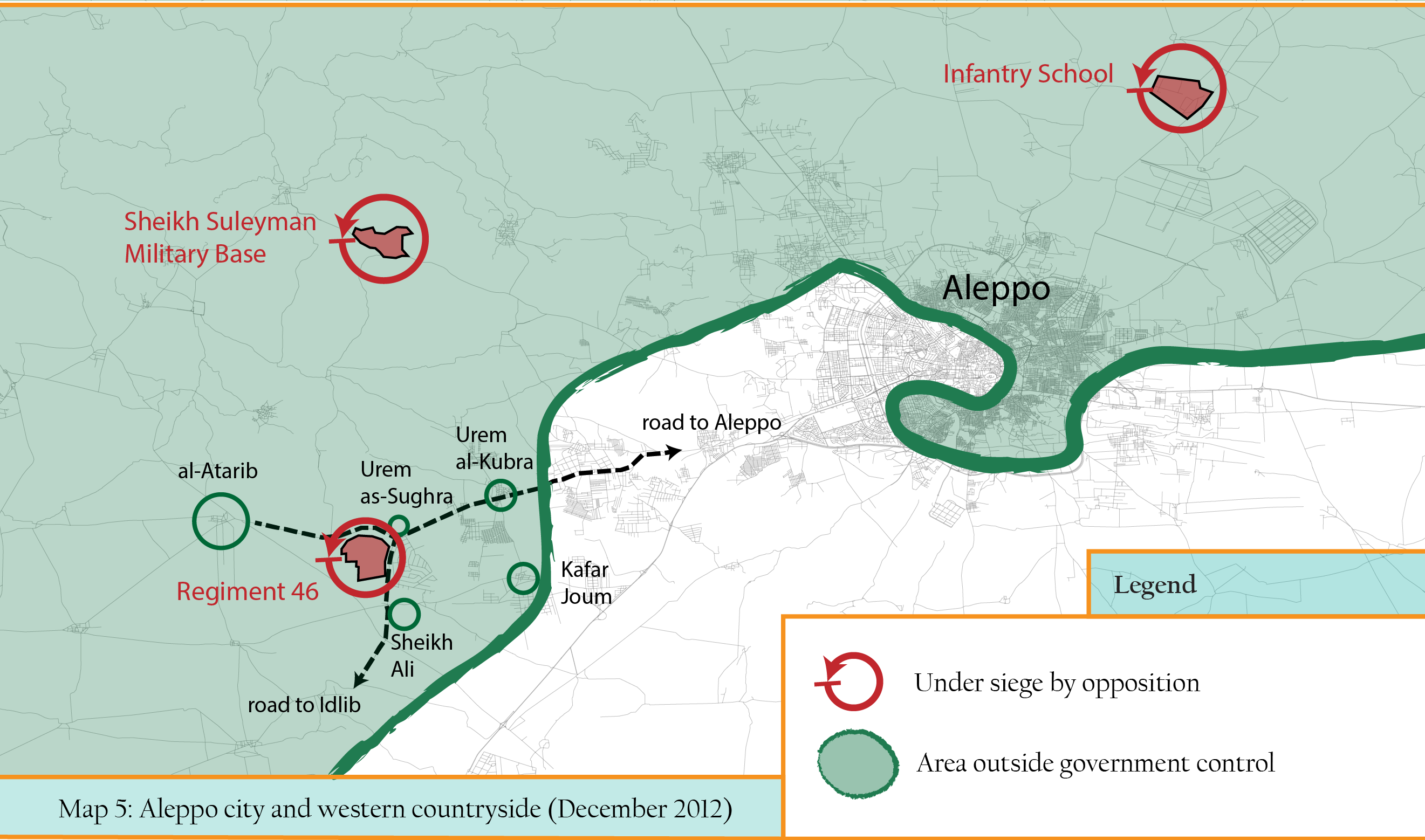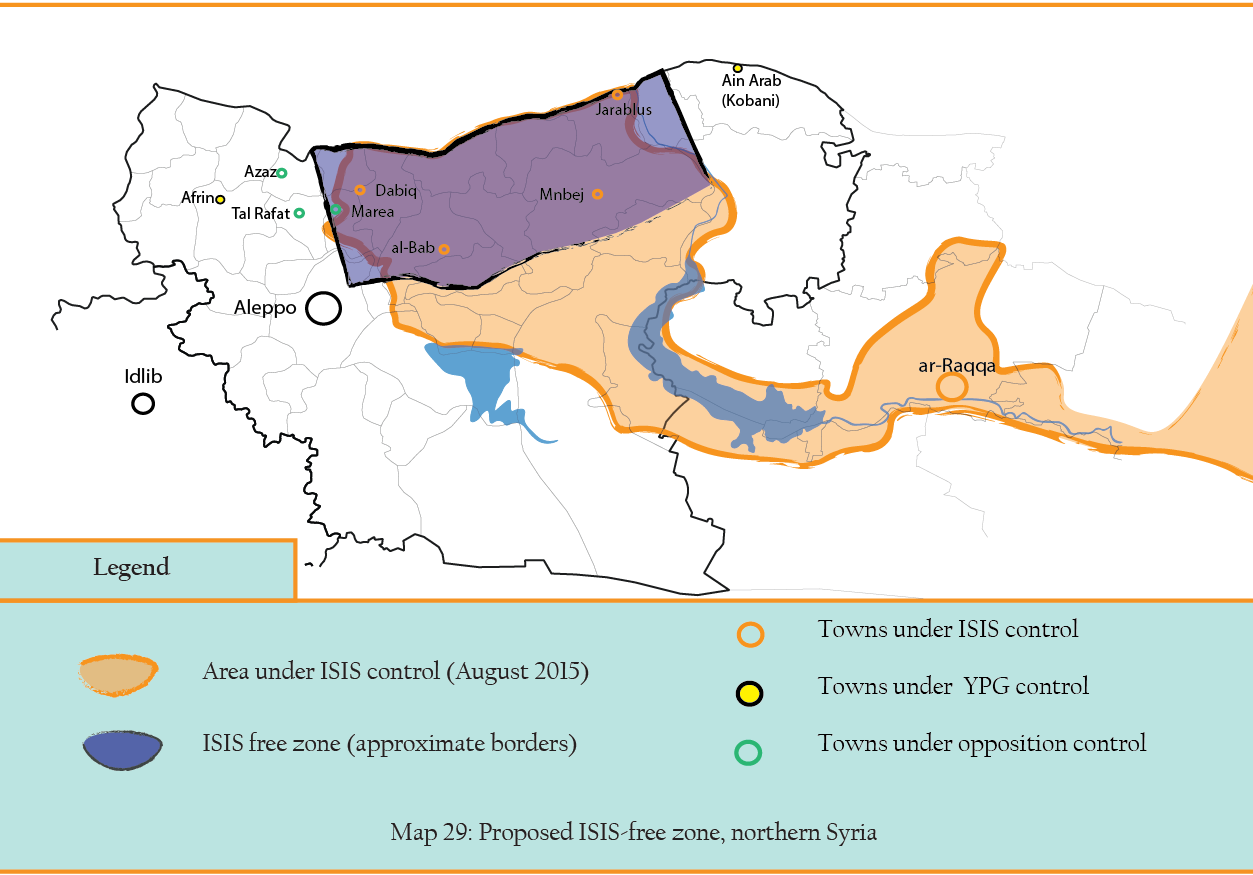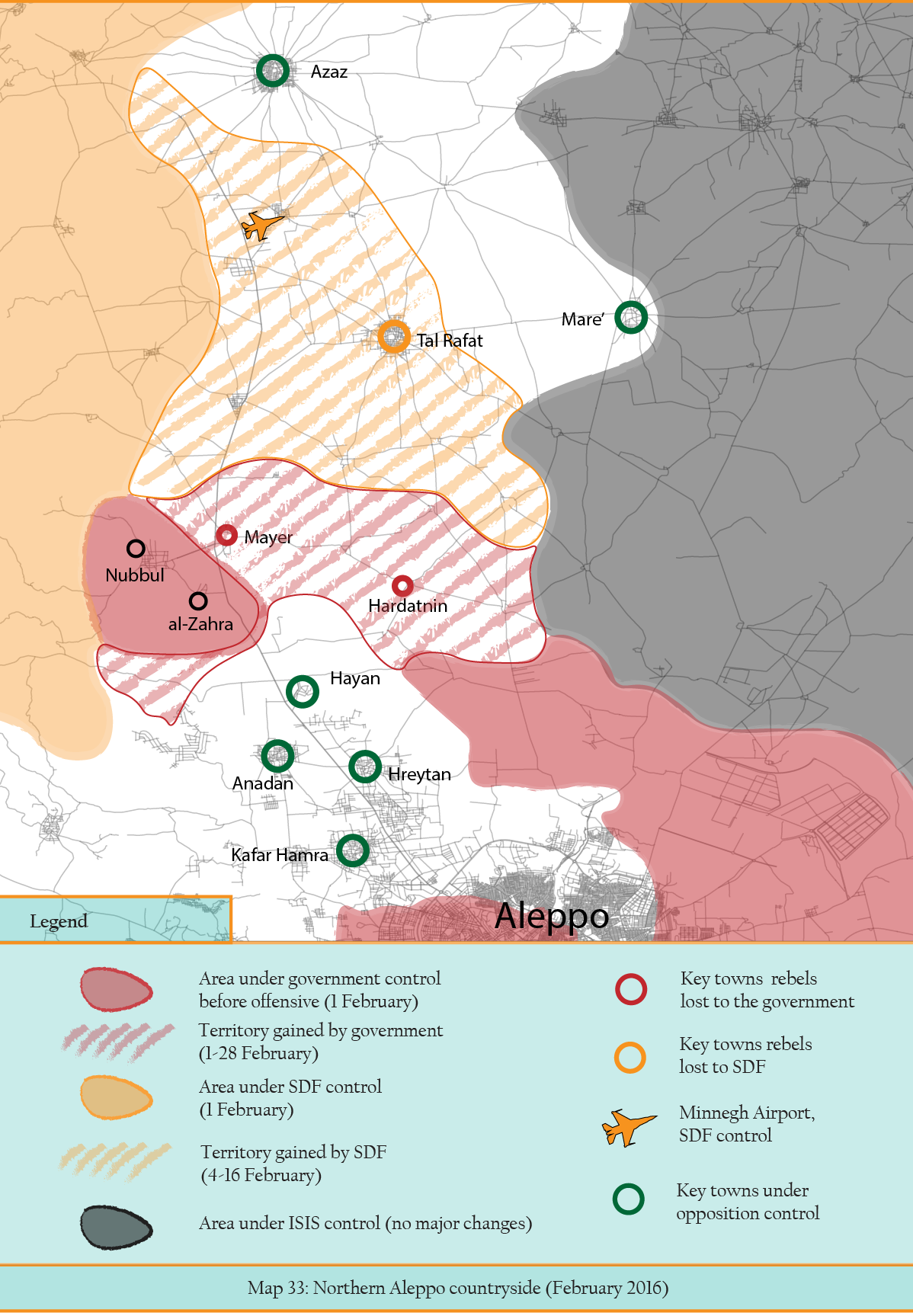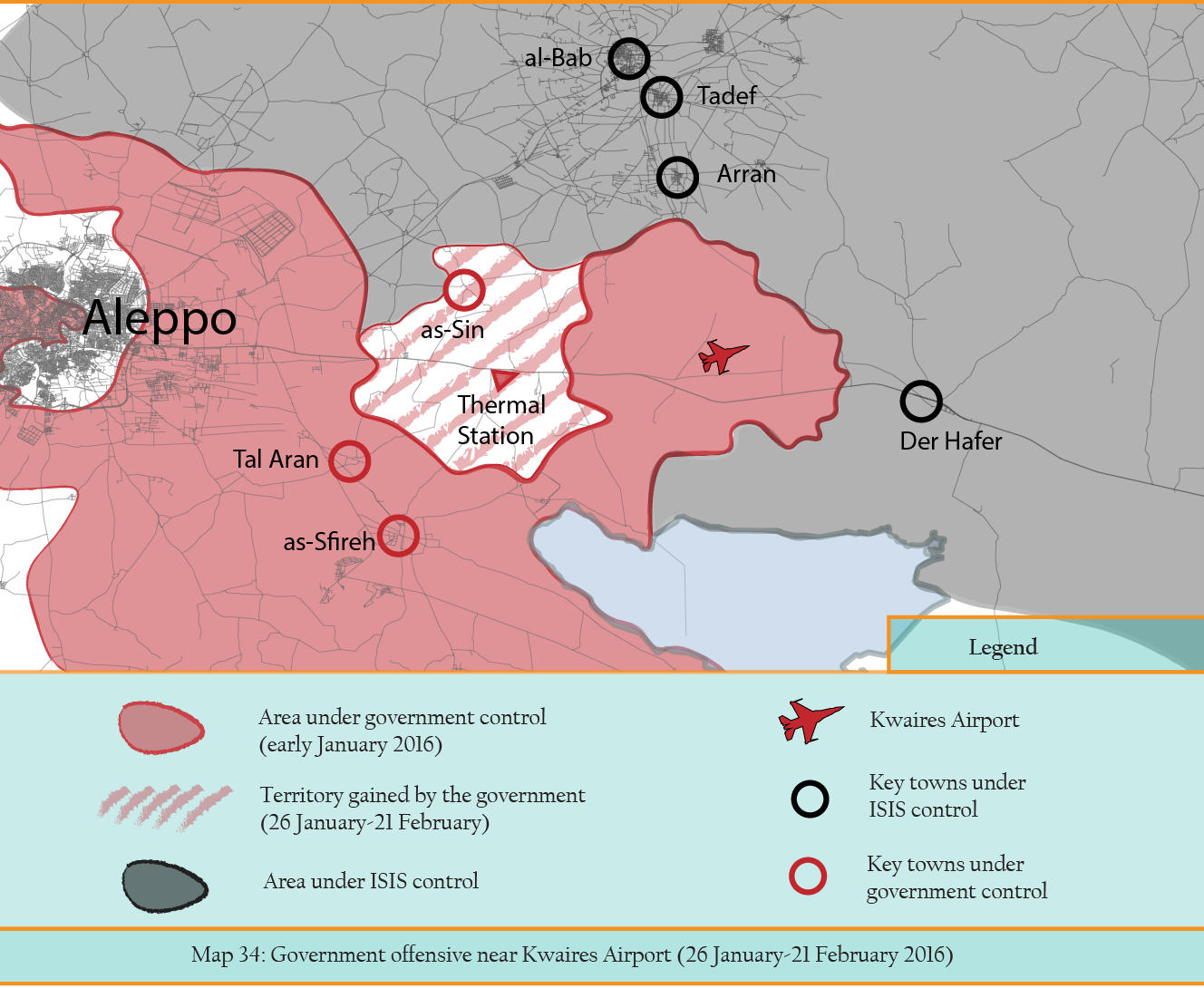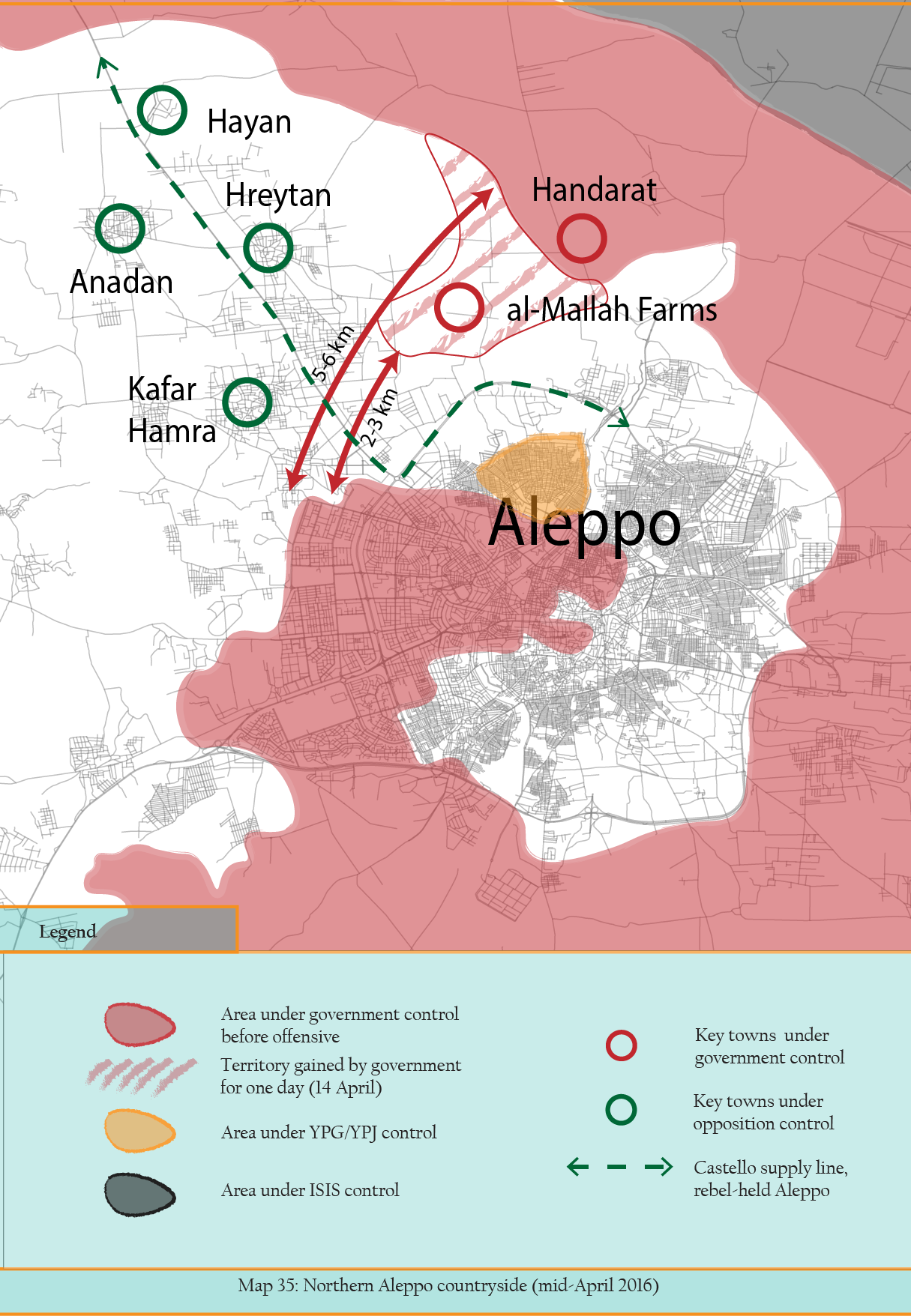The Aleppo Project published the “Aleppo Conflict Timeline” – a chronology of the conflict in Aleppo since 2012.
The Aleppo Project Fellow Armenak Tokmajyan studies the development of the armed conflict in Aleppo, the evolution of armed groups and government forces, and their military tactics and strategies. The timeline analyzes the Geneva Peace Process and its implications on the ground. The report also sheds light on the humanitarian situation in the divided city. The extensive report includes 35 original maps designed by the author.
The report will be updated at the beginning of every month.
EXECUTIVE SUMMARY
Syria’s civil war reached Aleppo in July 2012 when the rebels, who had already taken control of most of the northern areas of the province, entered the city. Aleppo was soon divided between an western half under government control and the east, held by the rebels. Up until 2016, the frontline that split the city changed little. Most battles took place around the city, in northern and southern countryside. Eastern Aleppo was pounded with barrel bombs, driving out most of the population and killing thousands.
The regime’s main strategy from 2012 until early 2016 can be summarized as follows:
- Maintaining key positions in the city and preventing the opposition from advancing towards the western part of the city.
- After losing the international highway between Hama and Aleppo, the government fought to keep alternative supply lines south of Aleppo accessible.
- Expanding control around the city and encircling the rebels in the eastern part, a tactic that had been successful in Homs. In Aleppo the regime came close to achieving this in mid-2014 but was pushed back. Russian bombing raids helped the government get close again in early 2016.
- Exploiting the rivalry between ISIS and the rebels, especially in countryside north of Aleppo. The war that ISIS triggered against the rebels was vital to the regime’s survival in Aleppo in late 2013.
- Using indiscriminate barrel bombings as a way to devastate rebel-held areas and expel the civilian population. Helicopters dropped an average of 107 barrel bombs a month on Aleppo between April and July 2014.
- Synchronizing operations with Russian air strikes to surround Aleppo in late 2015 and early 2016.
Opposition armed groups in Aleppo lacked a consistent strategy. Their military actions were mostly in response to the government and were only occasionally coordinated among themselves.
- Cutting off regime supply routes, besieging important military facilities and loosening the siege of Aleppo.
- Keeping ISIS out of the countryside northwest of Aleppo while simultaneously responding to government attacks.
- Rebel groups have constantly reorganize their ranks in attempts to improve military effectiveness although with limited success. Most successful military actions involved radical groups such as and Ahrar ash-Sham.
- From mid-2013, the opposition mostly fought against ISIS, to keep its lifeline – the Kilis-Azaz-Aleppo corridor – under its control.
More than a million people have left all together. Nearly half a million displaced people have taken refuge in the city. Conditions have steadily worsened. Those in the east are served by just 40 doctors. There is no functioning blood bank. As of September 2014, fighting had destroyed three out of four main water pumping stations. A ceasefire in March 2016 gave the population a brief break from the fighting but conditions still remained precarious for most people.
Click here to read the full report
 The Aleppo Project
The Aleppo Project